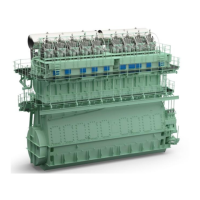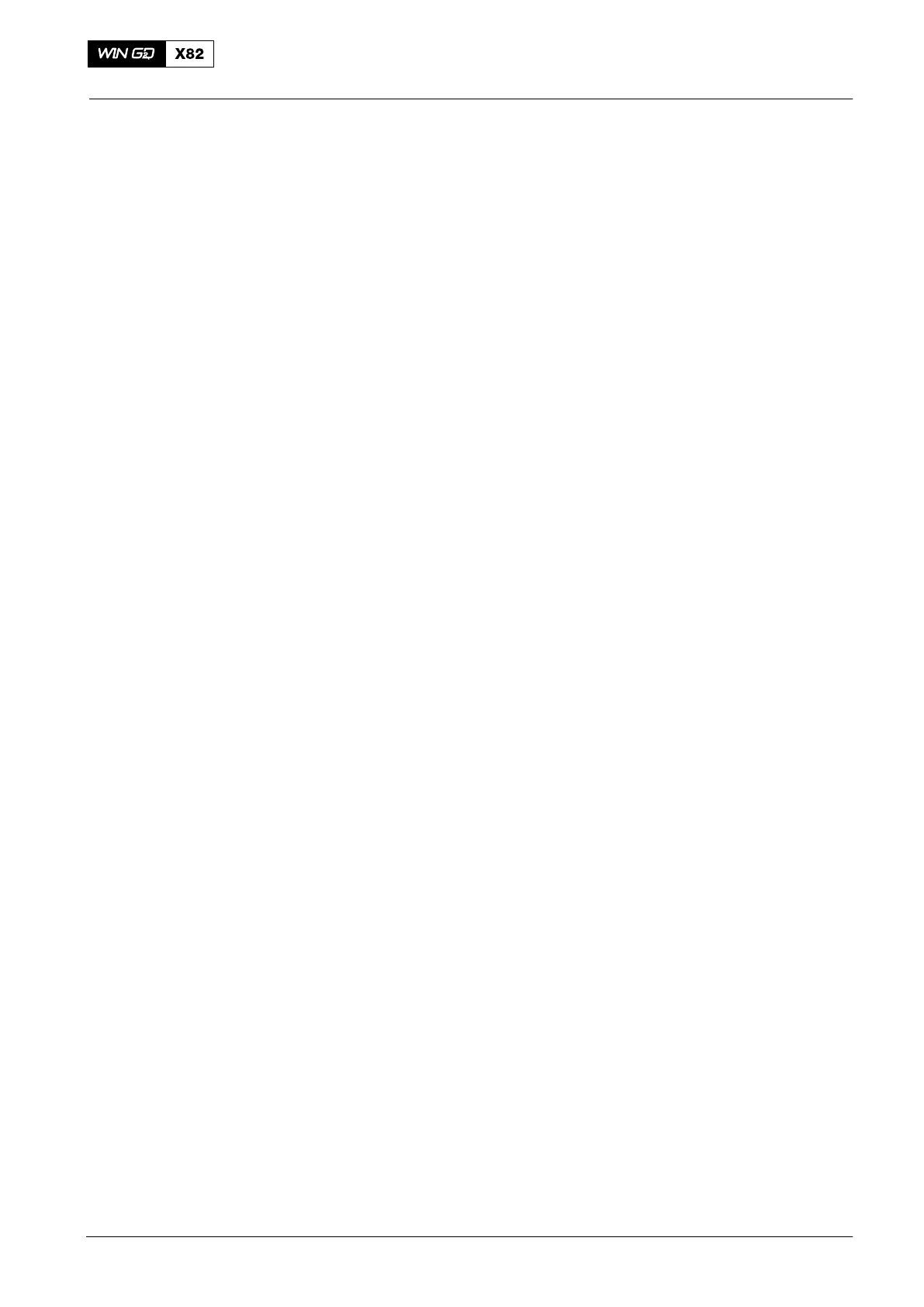Operation
8019−1/A2
Winterthur Gas & Diesel Ltd.
1/ 13
Fuel System − 9-cylinders
1. General 1..........................................................
2. Low Pressure Circuit 1..............................................
2.1 Pressure Retaining Valve − Setting 1...........................
3. High Pressure Circuit 2.............................................
4. Fuel Leakage System 6.............................................
4.1 Leakage Inspection Points 6...................................
4.2 Leakages 6...................................................
4.3 HP Fuel Pipes 3.29 − Leakage 6................................
4.4 Connection Pipes − Leakage 9.................................
4.5 HP Fuel Pipes 3.47 to Injection Valves − Leakage 10..............
4.6 Injection Control Unit − Leakage 13.............................
1. General
For heavy fuel operation, the heating system is used to keep the fuel injection system
warm during operation and for a short engine stop. All the pipes to the injection
control units (16, Fig. 1) have trace heating pipes and applicable insulation.
For safety, the fuel rail is installed in the rail unit (47). All the pipes in the high
pressure circuit outside the rail unit have double-walls.
2. Low Pressure Circuit
A booster pump, installed in the plant, supplies fuel through the fuel inlet pipe (1) to
the fuel pumps (3). The fuel quantity supplied is more than necessary for the engine.
The pressure retaining valves (6) and (7) adjust the booster pressure to the specified
setting. The unwanted fuel flows back to the system through the fuel outlet pipe (4).
2.1 Pressure Retaining Valve − Setting
For the values of the adjustable pressure retaining valve, see the indications given in
0250−1 Operating Data Sheet, Fuel − Supply unit (fuel pump) Inlet and Fuel −
Downstream of pressure retaining valve (fuel pump) Return.
When the spindle (3, Fig. 2) is turned in a clockwise direction (+), the pressure is
increased. When the spindle is turned in a counterclockwise direction (−), the
pressure is decreased. The pressures are shown on the pressure gages (8, Fig. 1).
Before you can adjust the spindle (3, Fig. 2), you must loosen the the two locknuts (1)
and (2).
Note: Make sure that the same setting is applied to each of the two spindles (3).
If it is necessary to drain the low pressure circuit (e.g. for fuel pump removal), use the
drain valves. For more data, see Fig. 1 items (42), (43) and Fig. 3 items (4), (5).
2015-05

